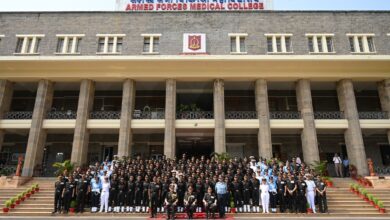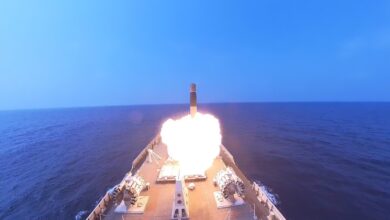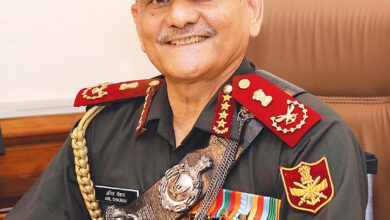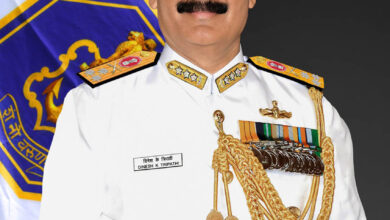Indian Coast Guard’s 46 glorious years of service to the nation
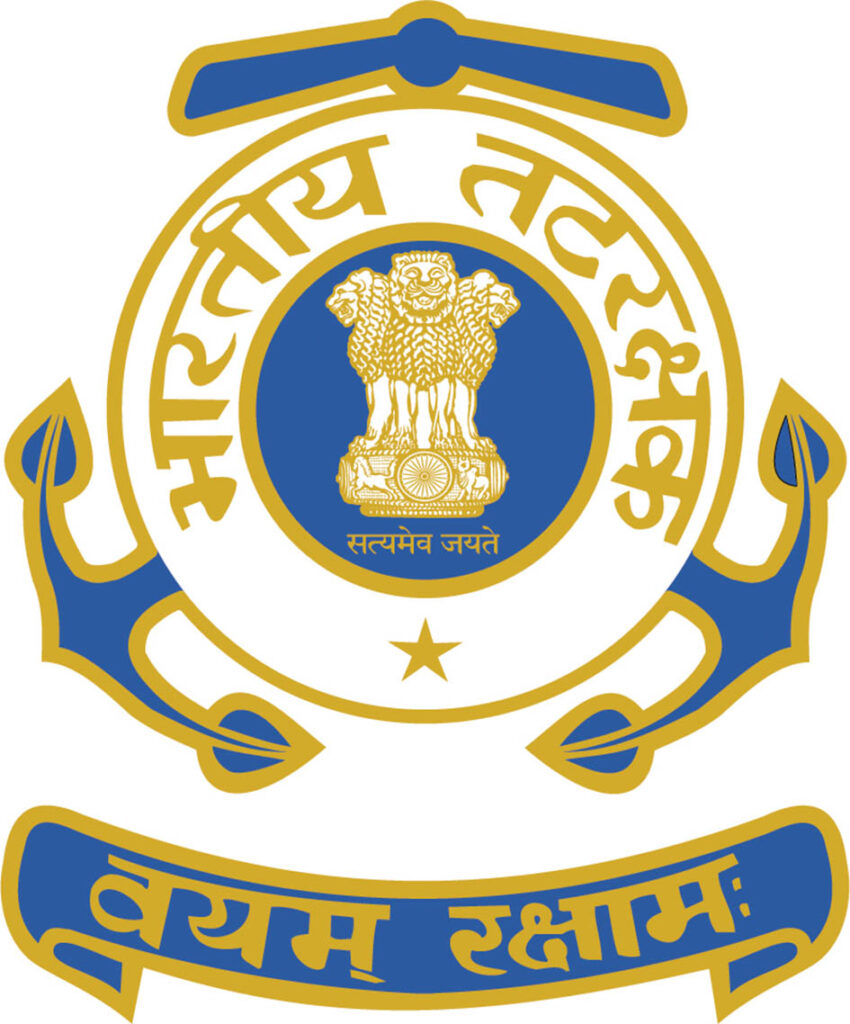 New Delhi. Raised on February 1, 1977 to ensure the security of the country’s maritime zones, the Indian Coast Guard (ICG), the youngest paramilitary force that operates under the Ministry of Defence has rendered yeoman service in the past 46 years, operating in close cooperation with the Indian Navy, the Department of Fisheries, the Department of Revenue (Customs), the Central Armed Police Forces, and the state police forces.
New Delhi. Raised on February 1, 1977 to ensure the security of the country’s maritime zones, the Indian Coast Guard (ICG), the youngest paramilitary force that operates under the Ministry of Defence has rendered yeoman service in the past 46 years, operating in close cooperation with the Indian Navy, the Department of Fisheries, the Department of Revenue (Customs), the Central Armed Police Forces, and the state police forces.
The establishment of the ICG was first proposed by the Indian Navy to provide non-military maritime services to the nation. In the 1960s, sea-borne smuggling of goods was threatening India’s domestic economy. The Indian Customs Department frequently called upon the Indian Navy for assistance with patrol and interception in the anti-smuggling effort.
The Nagchaudhuri Committee was constituted with participation from the Indian Navy and the Indian Air Force to study the problem. In August 1971, the committee identified the requirement to patrol India’s vast coastline, set up a registry of offshore fishing vessels to identify illegal activity, and establish a capable and well-equipped force to intercept vessels engaged in illegal activities. The committee also looked at the number and nature of the equipment, infrastructure and personnel required to provide those services.
By 1973, India had started a programme to acquire the equipment and started deputing personnel from the Indian Navy for these anti-smuggling and law enforcement tasks, under the provisions of the Maintenance of Internal Security Act. The Indian Navy sensed that the law enforcement nature of these duties diverged from its core mission as a military service.
Admiral SN Kohli, the then Chief of Naval Staff, hence made a recommendation to the Defence Secretary outlining the need for a separate maritime service to undertake those duties and offering the Navy’s assistance in its establishment. On August 31, 1974, the Defence Secretary submitted a note to the Cabinet Secretary proposing cabinet action on Admiral Kohli’s recommendation.
As a result, in September 1974, the Indian cabinet set up the Rustamji Committee, under the chairmanship of KF Rustamji, with participation from the Navy, the Air Force and the Department of Revenue to examine gaps in security and law enforcement between the roles of the Indian Navy and the central and state police forces.
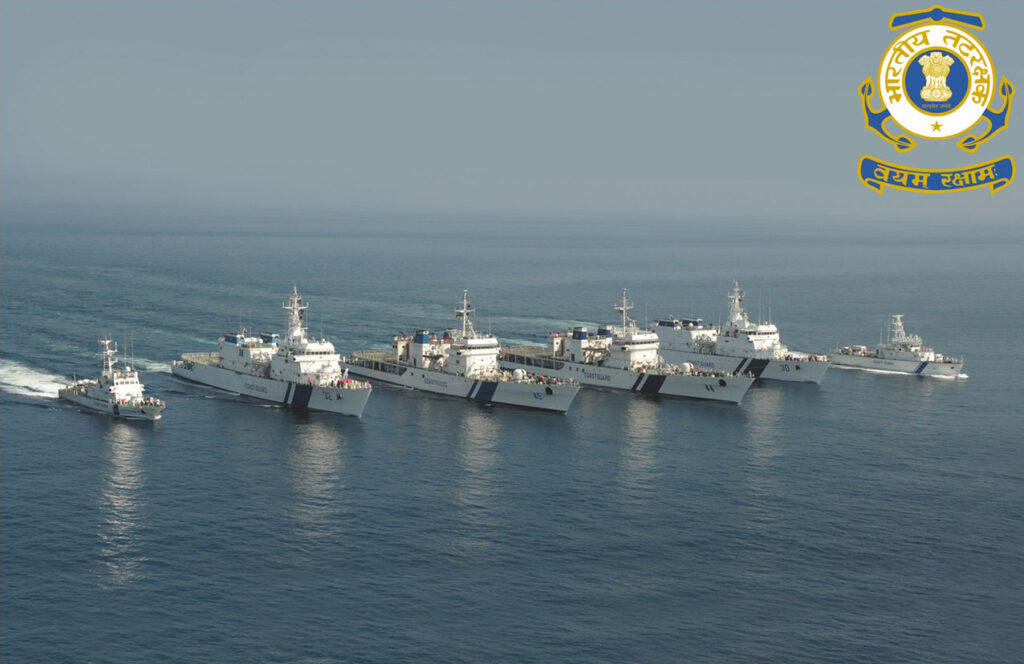
The discovery of oil off Bombay High further emphasised the need for a maritime law enforcement and protection service. The committee submitted its recommendation for the establishment of the Indian Coast Guard under the Ministry of Defence on July 31, 1975. Bureaucratic wrangling followed, with the Cabinet Secretary making a recommendation to place the service under the Ministry of Home Affairs. Then Prime Minister Indira Gandhi overruled the Cabinet Secretary and decided to accept the original recommendation of the Rustamji Committee to place the service under the Ministry of Defence.
An interim ICG came into being on February 1, 1977, equipped with two small corvettes and five patrol boats transferred from the Navy. The duties and functions of the service were formally defined in the Coast Guard Act that was passed by Parliament on August 18, 1978 and came into immediate effect.
Vice Admiral VA Kamath of the Indian Navy was appointed the founding Director-General. Prime Minister Morarji Desai inspected the Guard of Honour at the service’s inauguration. Vice Admiral Kamath proposed a five-year plan to develop the ICG into a potent force by 1984, but the full potential of this plan was not immediately realised due to a resource crunch.
One of the historic operational successes of the ICG occurred in October 1999, with the recapture on the high seas of a Panamanian-registered Japanese cargo ship, MV Alondra Rainbow, hijacked off Indonesia. Her crew were rescued off Phuket, Thailand. The ship had been repainted as MV Mega Rama, and was spotted off Kochi, heading towards Pakistan.
She was chased by ICGS Tarabai and INS Prahar of the Indian Navy, and apprehended. It was the first successful prosecution of armed pirates in over a century.
The ICG conducts exercises with its counterparts around world.
After the 2008 Mumbai attacks, the Indian government initiated a programme to expand the ICG force, assets and infrastructure.
The force aims to have 200 ships and 100 twin-engined aircraft by 2023 in its fleet.
The Indian Coast Guard’s motto is “वयम रक्षामः” (Vayam Rakshamah), which translates from Sanskrit as “We Protect”.
Mission of the ICG:
- Safety and protection of artificial islands, offshore terminals and other installations
- Protection and assistance to fishermen and mariners at sea
- Preservation and protection of marine ecology and environment including pollution control
- Assistance to the Department of Customs and other authorities in anti-smuggling operations
- Law enforcement in territorial as well as international waters
- Scientific data collection and support
- National defence during hostilities (under the operational control of the Indian Navy)
Additional responsibilities of the ICG:
- Offshore Security Coordination Committee (OSCC) – The Director-General of the Indian Coast Guard is the Chairman of OSCC constituted by the Ministry of Petroleum and Natural Gas (MoPNG), of which the Flag Officer Defence Advisory Group is a member.
- National Maritime Search and Rescue Coordinating Authority (NMSARCA) – The Director-General of the Indian Coast Guard is the NMSARCA for executing / coordinating search and rescue (SAR) missions
- Lead Intelligence Agency (LIA) – For coastal and sea borders
- Coastal Security – The Director-General of the Indian Coast Guard is the commander of coastal command and is responsible for overall coordination between central and state agencies in all matters relating to coastal security.


